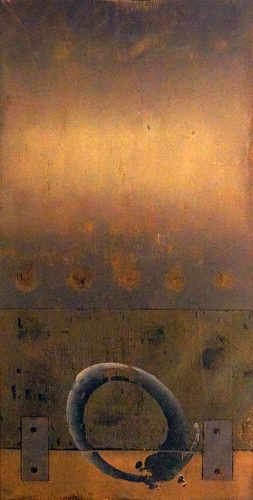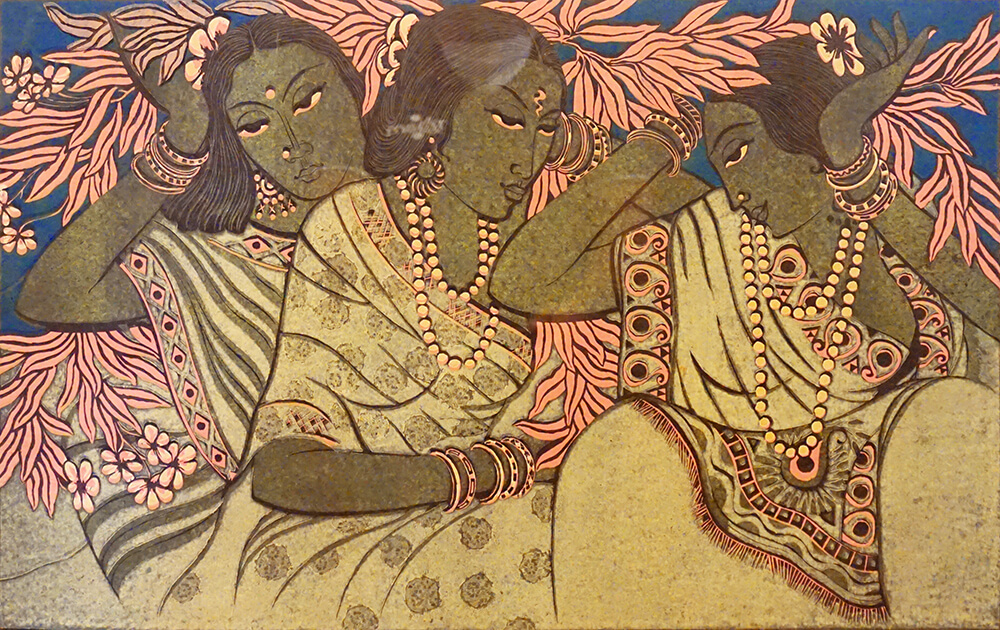‘Golok’ is a 1980 abstract painting by Abdus Satter. ‘Golok’ directly translates into a spherical object. In this painting, we see a ring-like circular object against a dark moody backdrop. 3 layers of colors pinned by wood looking piece creates a concrete mechanical atmosphere and makes an unsettling environment. Instead of showcasing peace, beauty, tranquility, and harmony, it paints the image of discomfort, discontent, and a lack of control.

Abdus Satter
Abdus Satter was born in 1948, Bangladesh. His talent in drawing was noticed by his school teacher in Natore, Rajshahi. Encouraged by his father, he joined the Government Art College in Dhaka and was one of the first students to study in the Oriental Art department. He later went to the US as a Fulbright scholar and received an MFA from the Pratt Institute in New York. Satter completed his post-graduate studies at Visva Bharati, Santiniketan. Abdus Satter served as a faculty in the department of fine art, University of Dhaka, and retired as a professor in the same department. He continued to work ever after that. His works have been shown in many countries of the world. He received awards at the Poland Art Museum International Prints Exhibition in 1997; the First International Triennal for Prints in Egypt in 1993; the International Biennal of Graphic Art in Yugoslavia in 1981, 1985, and 1989; the First Biennal in Pakistan in 1981, and the Asian Art Biennale in 1981. In Bangladesh, he received an Honourable Mention in 1994 and 1992, the Best Award for Print in 1981 and 1976, and a Gold Medal in 1980.
Golok

Artist Art Style
Abdus Satter expertise in woodcut prints and yet he continues to contribute in promoting oriental art in Bangladesh are immense. Bruised and affected by the horror of 1971, his artistic view and style have been deeply influenced by it. He tries to break free of the cage of death and destruction in his art and uses the symbols of happiness; women, flowers, and moonlit nights as his subjects. But the vicious cycle of distress and loss never stops and brings him, again and again, to depicts the elements of suffering and pain into his canvases.


